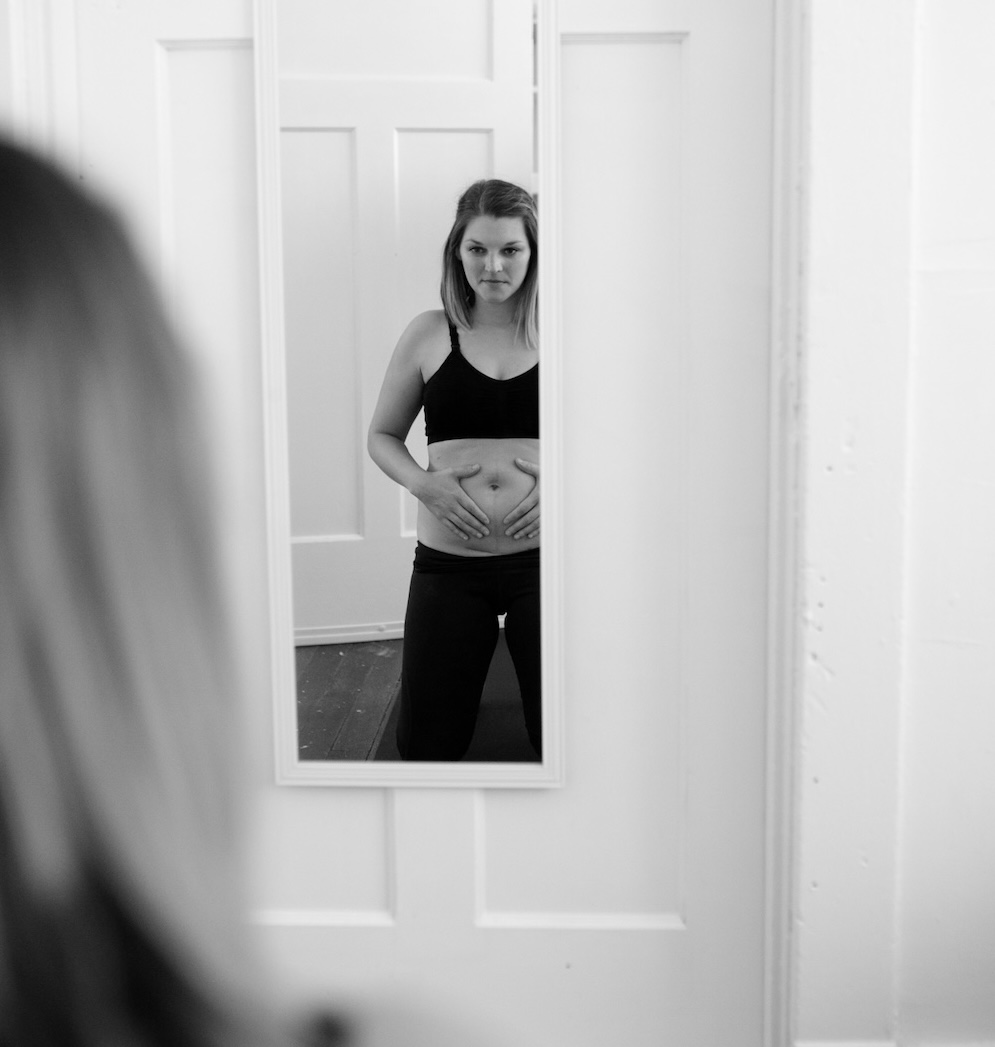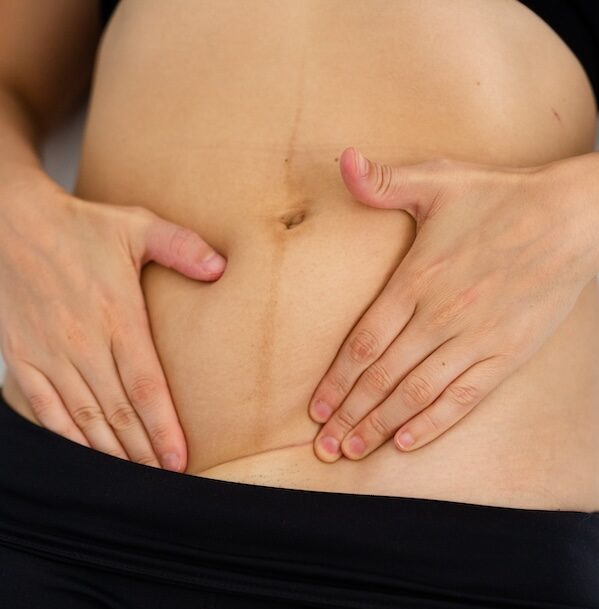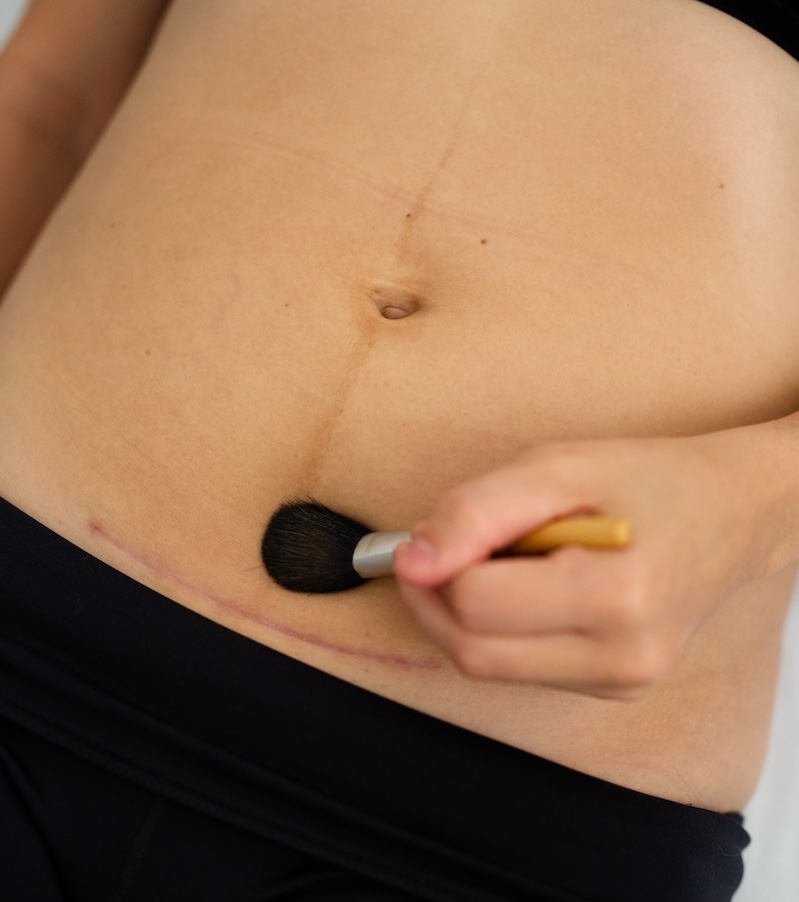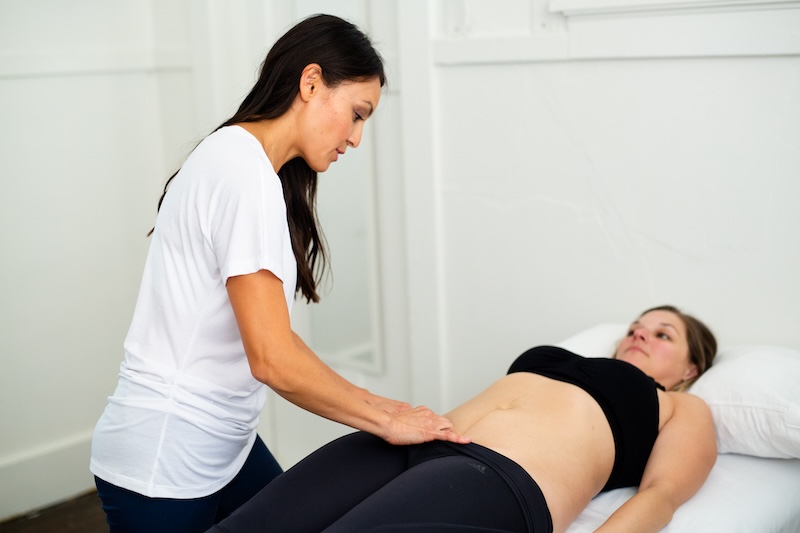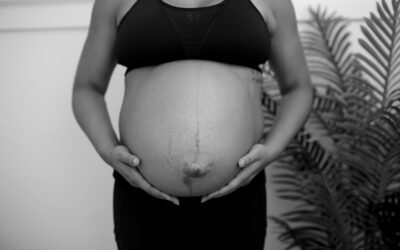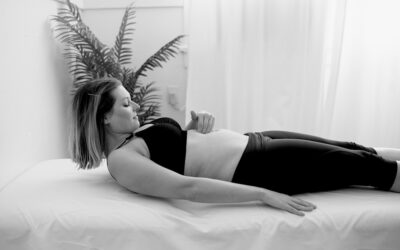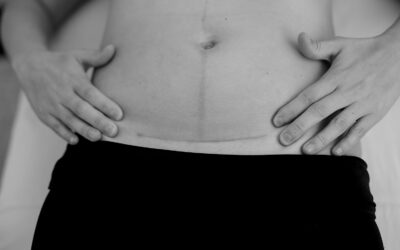Your body may have changed a lot during pregnancy, childbirth, and postpartum. Especially in a world that glorifies “bouncing back” after birth, you might be feeling the pressure to go back to your pre-baby body. That means a “mom pooch” caused by diastasis recti or a C section shelf can create major insecurity.
But even if you’re not concerned about how your body looks, it’s still a good idea to pay attention to the “C-Section pooch”. That’s because there’s a chance these physical changes might be affecting your bladder, bowel, and sexual health.
What’s a C section shelf?
A C-section shelf is also known as an overhang or section pooch. This happens when loose skin and excess fat accumulates in the lower abdomen after having a c-section delivery. Here are a few things to know about them.
C-section shelves result from healing and scar restriction.
C-section shelves happen when various layers of healing tissue along the incision adhere to one another. This creates an indented scar. Over time, the tissue just above the scar can puff out and create a shelf. Significant scar restriction can also cause a shelf.
C-sections create scar tissue multiple layers deep.
Just like a superficial scar can become stiff on the skin level, C-section scars can affect even deeper layers of abdominal skin. Restriction at any layer can cause a C-section shelf to occur.
C-section shelves are harmless, but they can cause other problems.
Your C-section scar sits on top of your bladder and extends all the way past your abdominal muscles. This means scar restriction at these deeper levels can cause issues with your pelvic floor.
In addition to changing your physical appearance, a C-section scar shelf can cause:
- urinary urgency, frequency, and leakage
- constipation or difficulty emptying your bowels
- pelvic or back pain, especially with sex
- abdominal muscle and pelvic floor weakness
- pelvic floor tension
C-section shelves are sometimes preventable.
Some people find that strengthening their pelvic floor and core muscles after childbirth can reduce and flatten the shelf. Belly binding and compression garments can also help in the immediate postpartum period.
But some things are generally out of your control, like incision tightness and genetics. These things can play a role in shelf development, too.
How to Get Rid of a C Section Shelf
A C shelf from a C section can improve or resolve in weeks to years after childbirth.
If you’re like many women, you might wonder if ab workouts help with C shelfs. They don’t. You might hope diet and exercise will do the trick. They probably won’t.
But giving your scar some TLC can! Here’s how to start.
#1 Scar Massage
Immediately after childbirth, your incision site, belly button, and surrounding abdominal area skin will feel numb. Start by gently massaging 2-3 inches around your scar. This gives you a jump start on bringing healing, blood flow, and sensation back to the area.
After your 6-week postpartum visit (and once your scar is healed), you can start massaging the actual scar. Move it up and down and side to side. Focus on any area that feels tight or hard to move around.
Dry needling is another therapy that can improve blood flow and promote deep healing. Note this should only be performed by a licensed physical therapist or acupuncturist.
Spending 2-3 minutes a couple times a week on scar management, is one of many excellent treatment options for a shelf. You can even prevent one from happening altogether! You can also try a PT-approved product to improve scar mobility.
#2 Scar Desensitization
Some people with C-section shelves report scar hypersensitivity. Their scar looks healed, but certainly doesn’t feel like it. By exposing the scar to varying textures – like tissues, q-tips, makeup brushes – you can improve scar pain and sensitivity.
#3 Pelvic Floor Physical Therapy
Pelvic floor PTs are C-section shelf experts. In addition to identifying a C shelf, we can do manual therapies like myofascial release to reduce scar tissue adhesions and improve mobility.
Also, C-section shelves can both weaken and tighten the pelvic floor, and it can be hard to know which has happened to you! A pelvic floor PT can help you figure it out.
All bodies are good bodies.
And good bodies deserve excellent care. Especially down there.
Not sure whether to strengthen or relax your pelvic floor and core after a C-section? Take my free quiz! After answering just a few short questions, you’ll discover your personalized roadmap toward pelvic floor health.

